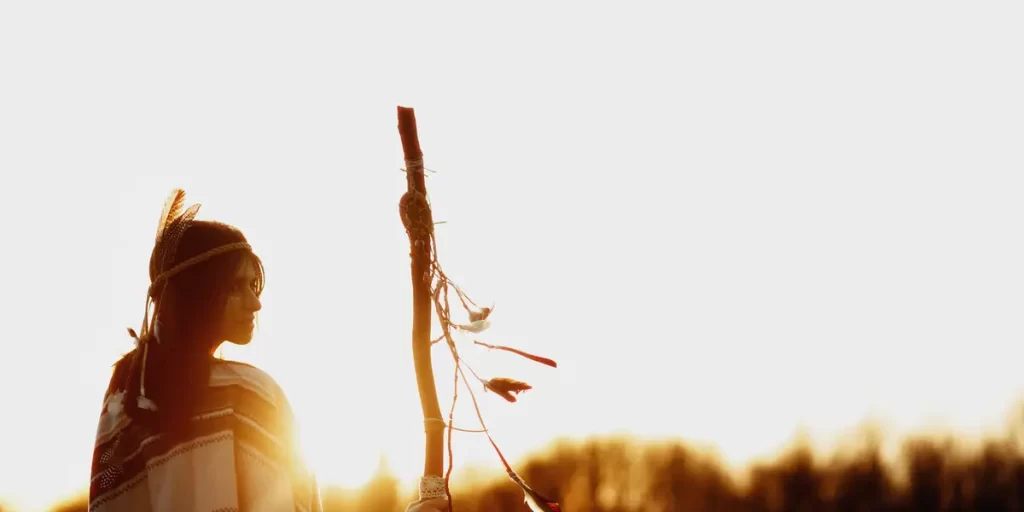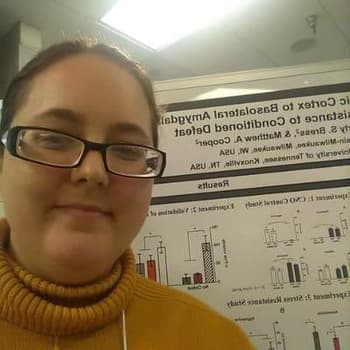Native Americans and Alcoholism
Written by Thomas Christiansen
& Medically Reviewed by Dr. Brooke Dulka, PHD
Medically Reviewed
Up to Date
Last Updated - 6/17/2022
View our editorial policy
Alcoholism among Native Americans continues to be a serious problem that needs attention. There are many factors that may contribute to Native American alcoholism including cultural, economic and lifestyle factors. It is important to understand these differences to properly grasp the risks they pose to the Native American Community.
Statistics on Native Americans and Alcohol Abuse
According to the Native American Center for Excellence, 8.5% of Native Americans between 12 and 17 years old have an alcohol use disorder and 20.8% of Native Americans between the ages of 18 and 25 have an alcohol use disorder. Illicit drug use (marijuana, crack cocaine, hallucinogens, etc.) by Native Americans is also higher than any other single ethnic group.
Native Americans are also more likely to engage in binge drinking than other ethnicities. Native American youth (ages 12 to 17) have the highest rate of alcohol use of all ethnic groups — 20% of Native American youth engage in underage drinking. Native Americans who seek substance abuse treatment are also more likely than any other ethnic group to report alcohol abuse.
Cultural Impacts on Native American Alcoholism
Native American cultural barriers to health care certainly play a role in the prevalence of alcoholism. For example, in one study, Native Americans were more likely to report racial discrimination, cultural misunderstandings and transportation difficulties as healthcare barriers to receiving medical compared to Caucasian adults. But there are other cultural forces at work as well.
Cultural disconnection may play a large role in alcoholism among Native Americans. When a person is prevented from exploring their cultural background, that inability creates a disconnection within the person’s personal identity. Native Americans have suffered through cultural challenges that persist to this day. Such conditions can lead to alcohol abuse as a coping mechanism.
Learned Behaviors
Some people make the argument that an individual’s upbringing plays a big role in the development of alcoholism. All behavior is, essentially, a learned behavior. Problematic drinking behaviors are no exception. Since their introduction to alcohol, Native Americans have had no role models for drinking behavior and no cultural guidelines for the use (and misuse) of this substance. When children are exposed to alcohol abuse within their communities, they may end up repeating these behaviors.
Exposure to Violence
Violence among Native Americans often coincides with substance abuse and mental health disorders such as anxiety and PTSD. Additionally, one study found that 39% of Native American women were victims of intimate partner violence in their lifetime, a rate higher than any other ethnicity. Native American women also experience higher levels of sexual violence than other women in the United States. Alcohol use is reported in over 40% of violent incidents in Native American communities.
Economic Impacts on Native American Alcoholism
Native American alcohol abuse has also had negative economic impacts on communities. But it’s also their economic disadvantages that have greatly contributed to alcohol abuse.
Native American poverty rates are more than double that of the general population in the United States. Additionally, Native American children and families are even more likely to live in poverty. Living in poverty has long been associated with increased risk for substance abuse and alcoholism, and this is true among Native Americans as well.
Moreover, living in poverty puts one at an increased risk for mental health disorders, such as depression and post-traumatic stress disorder (PTSD). This further increases the risk of developing problems such as alcoholism. Substance abuse problems such as alcoholism most likely develop in the face of these socioeconomic challenges in an attempt to cope with (or mask) stress.
Treatment for Native Americans Struggling With Alcohol Abuse
While alcohol addiction can impact people from all cultures, many Native American people struggle with profound effects from alcohol use disorder. Because people from different backgrounds face unique social challenges, it’s important to take culture into account when searching for an addiction treatment program. There are many resources available throughout the country to help people find treatment that addresses specific cultural backgrounds and beliefs.
Located in Washington State, The Recovery Village Ridgefield provides comprehensive treatment plans for people of all backgrounds. The medical and clinical staff at The Recovery Village Ridgefield has the experience to meet the unique needs of Native American clients seeking treatment for alcohol addiction. The Recovery Village has fostered a relationship with several tribes in the Pacific Northwest to provide trusted care for Native Americans.
With cultural understanding and sensitivity, The Recovery Village Ridgefield offers individualized care plans with evidence-based treatment models. Call to speak with a representative about how professional addiction treatment can address a substance use disorder, co-occurring disorders and more. You deserve a healthier future, call today.
Sources
Native American Center for Excellence. “Environmental Scan Summary Report.” November 2008. Accessed September 14, 2019.
Substance Abuse and Mental Health Services Administration. “SAMHSA American Indian/Alaska Native Data.” Accessed September 14, 2019.
Substance Abuse and Mental Health Services Administration. “The TEDS Report Data Spotlight: American Indian and Alaska Native Substance Abuse Treatment Admissions Are More Likely Than Other Admissions to Report Alcohol Abuse.” November 18, 2014. Accessed October 1, 2019.
Call, Kathleen; et al. “Barriers to Care among American Indians in Public Health Care Programs.” Medical Care, 2006. Accessed September 14, 2019.
Frank, John; et al. “Historical and cultural roots of drinking problems among American Indians.” American Journal of Public Health, 2000. Accessed September 14, 2019.
Sarche, Michelle; Spicer, Paul. “Poverty and health disparities for American Indian and Alaska Native children: current knowledge and future prospects.” Annals of the New York Academy of Sciences, 2008. Accessed September 14, 2019.
Center for Behavioral Health Statistics and Quality. “Results from the 2015 National Survey on Drug Use and Health: Detailed Tables.” 2016. Accessed September 14, 2019.
Duran, Bonnie; et al. “Intimate Partner Violence and Alcohol, Drug and Mental Disorders Among American Indian Women from Southwest Tribes in Primary Care.” Journal of American Indian and Alaska Native Mental Health Research, 2009. Accessed September 14, 2019.
Futures Without Violence. “The Facts on Violence Against American Indian/Alaskan Native Women.” Accessed September 14, 2019.
Perry, S. “A BJS Statistical Profile, 1992-2002: American Indians and Crime.” Bureau of Justice Statistics, 2004. Accessed September 14, 2019.
American Psychiatric Association, DSM-5 Task Force. “Diagnostic and statistical manual of mental disorders: DSM-5™ (5th ed.).” 2013. Accessed September 14, 2019.
View Sources
Native American Center for Excellence. “Environmental Scan Summary Report.” November 2008. Accessed September 14, 2019.
Substance Abuse and Mental Health Services Administration. “SAMHSA American Indian/Alaska Native Data.” Accessed September 14, 2019.
Substance Abuse and Mental Health Services Administration. “The TEDS Report Data Spotlight: American Indian and Alaska Native Substance Abuse Treatment Admissions Are More Likely Than Other Admissions to Report Alcohol Abuse.” November 18, 2014. Accessed October 1, 2019.
Call, Kathleen; et al. “Barriers to Care among American Indians in Public Health Care Programs.” Medical Care, 2006. Accessed September 14, 2019.
Frank, John; et al. “Historical and cultural roots of drinking problems among American Indians.” American Journal of Public Health, 2000. Accessed September 14, 2019.
Sarche, Michelle; Spicer, Paul. “Poverty and health disparities for American Indian and Alaska Native children: current knowledge and future prospects.” Annals of the New York Academy of Sciences, 2008. Accessed September 14, 2019.
Center for Behavioral Health Statistics and Quality. “Results from the 2015 National Survey on Drug Use and Health: Detailed Tables.” 2016. Accessed September 14, 2019.
Duran, Bonnie; et al. “Intimate Partner Violence and Alcohol, Drug and Mental Disorders Among American Indian Women from Southwest Tribes in Primary Care.” Journal of American Indian and Alaska Native Mental Health Research, 2009. Accessed September 14, 2019.
Futures Without Violence. “The Facts on Violence Against American Indian/Alaskan Native Women.” Accessed September 14, 2019.
Perry, S. “A BJS Statistical Profile, 1992-2002: American Indians and Crime.” Bureau of Justice Statistics, 2004. Accessed September 14, 2019.
American Psychiatric Association, DSM-5 Task Force. “Diagnostic and statistical manual of mental disorders: DSM-5™ (5th ed.).” 2013. Accessed September 14, 2019.
Authorship






